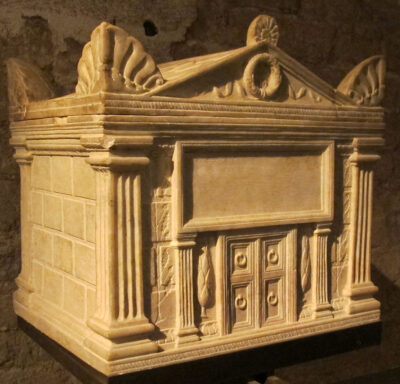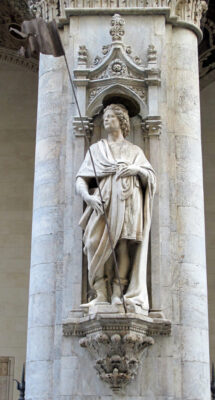Baby
Christianity reached Siena through a noble Roman named Ansanus (Patron Saint Ansanus) born in the 3rd century and secretly baptized and raised as a Christian by his nurse (she is also venerated as St. Maxima of Rome).



According to the Christian legend, young Ansanus had already suffered twice during the persecutions of Emperor Diocletian before he was taken to Siena as a prisoner. There, although confined, he managed to preach and convert many Sienese into the new religion, before he was finally decapitated by order of the Roman Emperor in 304 AD.



Before the passing of a decade there would be accounts of a Christian bishop of Siena named Floriano who intervened at the Synod of Rome in 313 AD. Until the Lombards invaded Tuscany in the 6th century the town remained in obscurity.
As a part of the Lombard Duchy of Tuscia (later Tuscany), the city of Sena flourished mainly due to the rerouting of the trade roads that connected the territories which now belonged to the Lombards with Rome. Siena quickly became a trading and resting stop of the pilgrimage route to the holy city.




